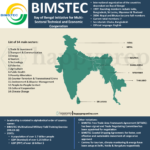The Trade Unions Act 1926
Introduction
An Act to provide for the registration of Trade Unions and in certain respects to
define the law relating to registered Trade Unions
CHAPTER I: PRELIMINARY
1. Short title, extent and commencement
- This Act may be called the Trade Unions Act, 1926.
- It applies to the whole of India.
2. Definitions
- Appropriate Government: in relation to Trade Unions whose objects are not confined to one State, the Central Government, and in relation to other Trade Unions, the State Government
- Registered Trade Union: A Trade Union registered under this Act
- Trade dispute: Any dispute between employers and workmen or between workmen and workmen, or between employers and employers which is connected with the employment or non-employment
CHAPTER II: REGISTRATION OF TRADE UNIONS
3. Appointment of Registrars
- The appropriate Government shall appoint a person to be the Registrar of Trade Unions for each State
4. Mode of registration
- A group of seven or more individuals can come together to form a trade union. To get it officially registered, they need to write down the rules of the trade union and follow the procedures given in the Trade Unions Act.
- An application to register a trade union remains valid even if up to half of the applicants withdraw or leave the union after applying, but before the registration is completed.
5. Application for registration
To register a trade union, an application must be submitted to the Registrar along with a copy of the union’s rules. The application should also include a statement containing the names, occupations, and addresses of the members applying, the name of the trade union and the address of its head office, and the titles, names, ages, addresses, and occupations of the union’s office-bearers.
6. Provisions to be contained in the rules of a Trade Union
A trade union can only be registered under this Act if its executive body is formed according to the rules of the Act, and if its rules include certain important details. These include:
- The name of the trade union.
- The goals and objectives for which it has been formed.
- How the union’s funds will be used.
- Keeping a list of members and allowing leaders and members to inspect it.
- Rules for admitting members who actually work in the related industry.
- The conditions under which members can receive benefits or be fined.
- How the rules can be changed or updated.
- How the union’s leaders and executives will be chosen or removed.
- How the union’s funds will be safely kept.
- The method for dissolving the trade union if needed.
7. Power to call for further particulars and to require alteration of name
The Registrar has the right to ask for more information to make sure that the application follows the rules in Section 5 and that the trade union qualifies for registration under Section 6. The Registrar can delay registration until all required information is provided. Also, if the trade union’s proposed name is the same as another registered trade union, the Registrar can ask the union to change its name and will not register it until the name is changed.
8. Registration
If the Registrar is satisfied that the trade union has followed all the rules needed for registration under the Act, he will go ahead and register the trade union.
9. Certificate of registration
Once the Registrar registers a trade union under Section 8, he will give a certificate of registration in the required format. This certificate is the final proof that the trade union has been properly registered under the Act.
10. Cancellation of registration
The Registrar can cancel or withdraw a trade union’s registration certificate in the following cases:
- If the trade union itself applies for cancellation.
If the Registrar believes that the certificate was obtained through fraud or mistake, the union no longer exists, or the union has knowingly broken any rules of the Act even after being warned.
However, before cancelling the certificate, the Registrar must give the trade union a written notice at least two months in advance, explaining the reason for cancellation.
11. Appeal
If someone is unhappy because the Registrar refused to register a trade union or cancelled its registration, they can file an appeal within the time allowed by the rules. The court hearing the appeal can either reject it or order the Registrar to register the trade union and issue a registration certificate.
12. Registered office
All letters and notices meant for a registered trade union can be sent to its registered office address. If the trade union changes the address of its head office, it must inform the Registrar in writing within 14 days of the change.
13. Incorporation of registered Trade Unions
A registered trade union becomes a legal entity that can own property, make contracts, and take or face legal action in its registered name. It continues to exist even if its members change.
14. Certain Acts not to apply to registered Trade Unions
The following Act don’t apply to any registered Trade Union
- The Societies Registration Act, 1860
- The Co-operative Societies Act, 1912
- The Companies Act, 1956
CHAPTER III: RIGHTS AND LIABILITIES OF REGISTERED TRADE UNIONS
15. Objects on which general funds may be spent.
The general funds of a registered trade union can only be used for specific purposes like:
- Paying salaries and expenses of union leaders.
- Managing union activities and auditing accounts.
- Handling court cases to protect union or worker rights.
- Supporting trade disputes.
- Giving help to members during strikes or disputes.
- Providing financial help to members or their families in case of death, illness, accidents, or unemployment. etc.
16. Constitution of a separate fund for political purposes.
- A registered trade union can create a separate fund using special contributions from its members. This fund can be used to support the civic and political interests of its members, like raising awareness or taking part in public activities.
- No member of a trade union can be forced to contribute to the special fund for civic and political activities. If a member chooses not to contribute, they cannot be denied any benefits of the union or be treated unfairly in any way.
17. Criminal conspiracy in trade disputes.
A trade union leader or member cannot be punished under Section 120B of the Indian Penal Code for making an agreement to support the union’s lawful objectives (as listed in Section 15), unless the agreement involves planning a crime.
18. Immunity from civil suit in certain cases.
A registered trade union, its leaders, or members cannot be sued in a civil court for actions taken to support a trade dispute—like encouraging someone to break a work contract or affecting someone’s business—if the actions are legal. Also, the union is not responsible for any wrongful act done by its agent during a trade dispute if the agent acted without the union’s knowledge or against its instructions.
19. Enforceability of agreements.
An agreement between members of a registered trade union is not considered illegal just because it restricts trade. However, civil courts cannot be used to enforce such agreements or claim damages if the agreement is about things like when or how members work, do business, or sell goods.
20. Right to inspect books of Trade Union.
The account books and member list of a registered trade union must be available for inspection by its leaders or members, as per the timings mentioned in the union’s rules.
21. Rights of minors to membership of Trade Unions.
Anyone who is at least 15 years old can become a member of a registered trade union (unless the union’s rules say otherwise) and can fully use all member rights and carry out related duties.
21A. Disqualifications of office-bearers of Trade Unions.
A person cannot be an office-bearer or executive member of a trade union if:
- They are under 18 years old, or
- They were jailed for a crime involving moral wrongdoing, unless 5 years have passed since their release.
22. Proportion of office-bearers to be connected with the industry.
At least half of the office-bearers of a registered trade union must be people who are actually working in the industry that the trade union represents.
23. Change of name.
A registered trade union can change its name if at least two-thirds of its total members agree and it follows the rules given in Section 25
24. Amalgamation of Trade Unions.
Two or more registered trade unions can merge into one, with or without combining their funds, if at least half of the members vote and at least 60% of those votes support the merger.
25. Notice of change of name or amalgamation.
When a trade union changes its name or merges with another, it must send a written notice signed by the Secretary and seven members (from each union involved in a merger) to the Registrar. If the new name is already in use or too similar to another union’s name, the Registrar can reject it.
26. Effects of change of name and of amalgamation.
Changing the name of a registered trade union does not affect its rights, duties, or legal cases. Any legal case can continue under the new name. Similarly, if two or more trade unions merge, it does not affect their existing rights or the rights of their creditors.
27. Dissolution.
When a registered trade union is dissolved, a notice signed by the Secretary and seven members must be sent to the Registrar within 14 days. If the Registrar is satisfied that the rules were followed, the dissolution is officially registered and takes effect from that date. If the union’s rules don’t mention how to divide the funds after dissolution, the Registrar will decide how to fairly distribute the money among the members.
28. Returns.
Every year, a registered trade union must send an audited financial report and a list of its assets and liabilities to the Registrar by a set date. It must also include details of any changes in office-bearers and an updated copy of its rules. Any rule changes must be reported within 15 days. The Registrar or his officer can inspect the union’s records at its office or nearby, within 10 miles.
CHAPTER IV: REGULATIONS
29. Power to make regulations.
The appropriate government can make rules to implement the Trade Unions Act.
30. Publication of regulations.
Before making any regulations under Section 29, the government must publish the draft rules for public view. People should get at least 3 months to review them. Once finalized and published in the Official Gazette, these regulations will have the same authority as if they were part of the Act itself.
CHAPTER V: PENALTIES AND PROCEDURE
31. Failure to submit returns.
If a registered trade union fails to send required notices or documents, the responsible office-bearer or executive member can be fined up to ₹5, and ₹5 more for each week the delay continues, with a maximum total fine of ₹50.
If anyone knowingly makes a false entry or leaves out information in the required reports or rule copies, they can be fined up to ₹500.
32. Supplying false information regarding Trade Unions.
Anyone who knowingly gives a false or incorrect copy of a trade union’s rules or changes—either to a member or someone planning to join—with the intent to deceive, can be fined up to ₹200. This also applies if someone falsely claims that the rules of an unregistered union belong to a registered one.
33. Cognizance of offences.
Only a Presidency Magistrate or a First-Class Magistrate can try offences under this Act. Also, a court can take up a case only if a complaint is made by the Registrar (or with their permission), or by the person affected under Section 32, and it must be done within 6 months of the offence.
Want to read some more articles?
-
 Shanghai Cooperation Organization (SCO): Origin, Members, Facts, etc for UPSC and other exams
Shanghai Cooperation Organization (SCO): Origin, Members, Facts, etc for UPSC and other exams -
 BRICS: Origin, members and others for UPSC, PSC & other exams
BRICS: Origin, members and others for UPSC, PSC & other exams -
 BIMSTEC for UPSC: Origin, Members & More
BIMSTEC for UPSC: Origin, Members & More -
 General Science for Competitive exams: UPSC, PSC, APFC, EO-AO, SSC, etc
General Science for Competitive exams: UPSC, PSC, APFC, EO-AO, SSC, etc -
 THE TRADE UNIONS ACT, 1926 for UPSC EPFO APFC/EO-AO, ALC, and Other exams
THE TRADE UNIONS ACT, 1926 for UPSC EPFO APFC/EO-AO, ALC, and Other exams -
 Understanding Macroenvironment: Marketing Environment in Principles of Marketing
Understanding Macroenvironment: Marketing Environment in Principles of Marketing -
 Understanding Microenvironment: Marketing Environment in Principles of Marketing
Understanding Microenvironment: Marketing Environment in Principles of Marketing -
Interjections in English
-
Conjunctions in English
Copyright© 2024 | All rights reserved | Made in India